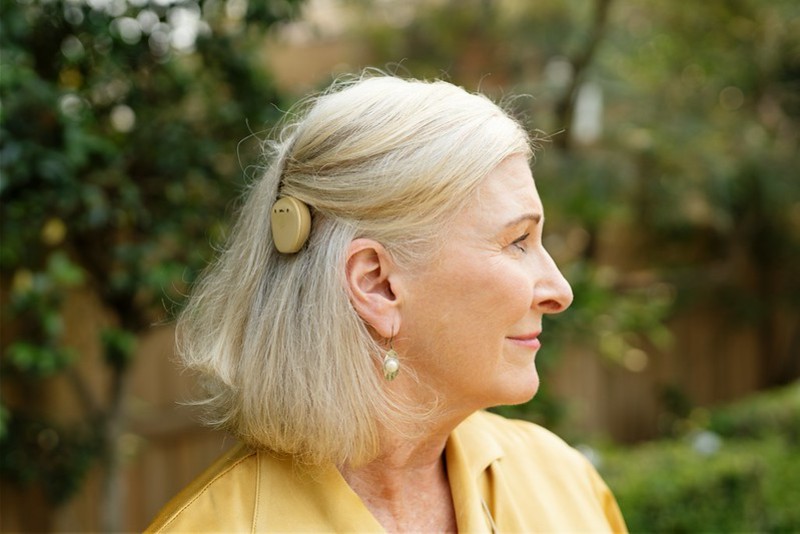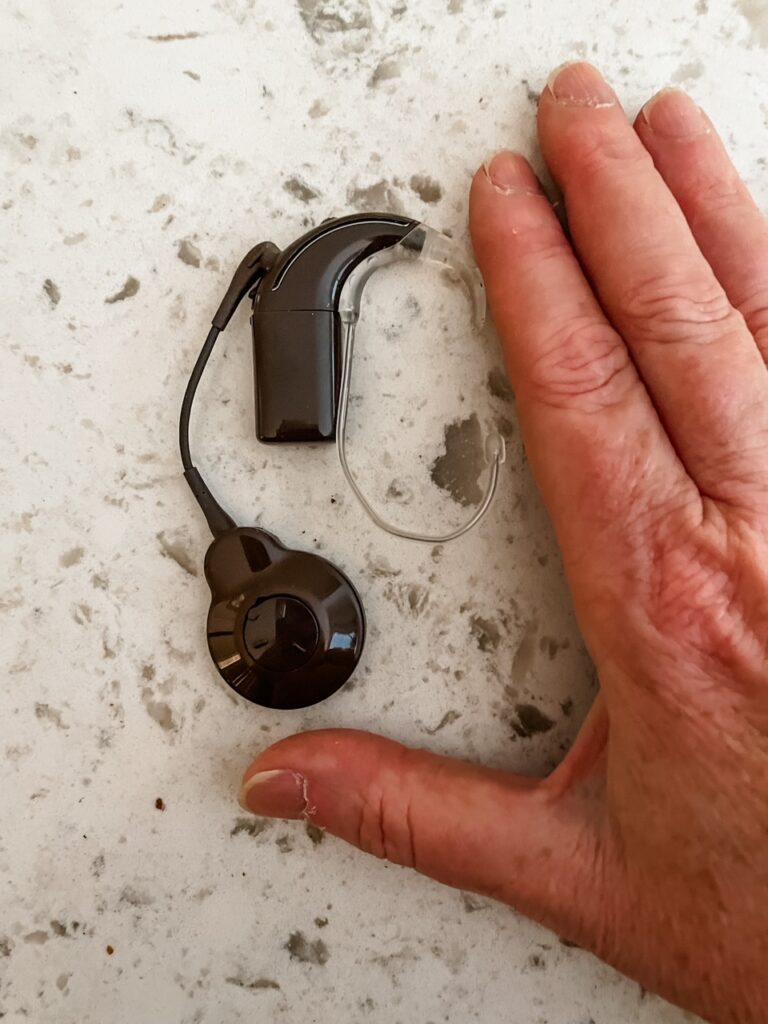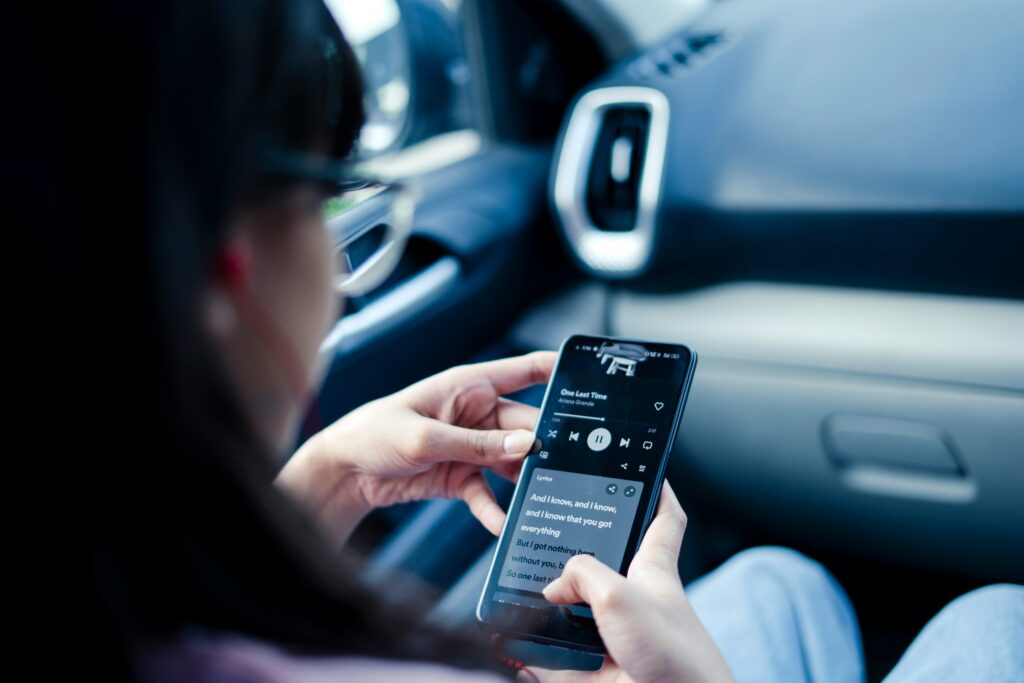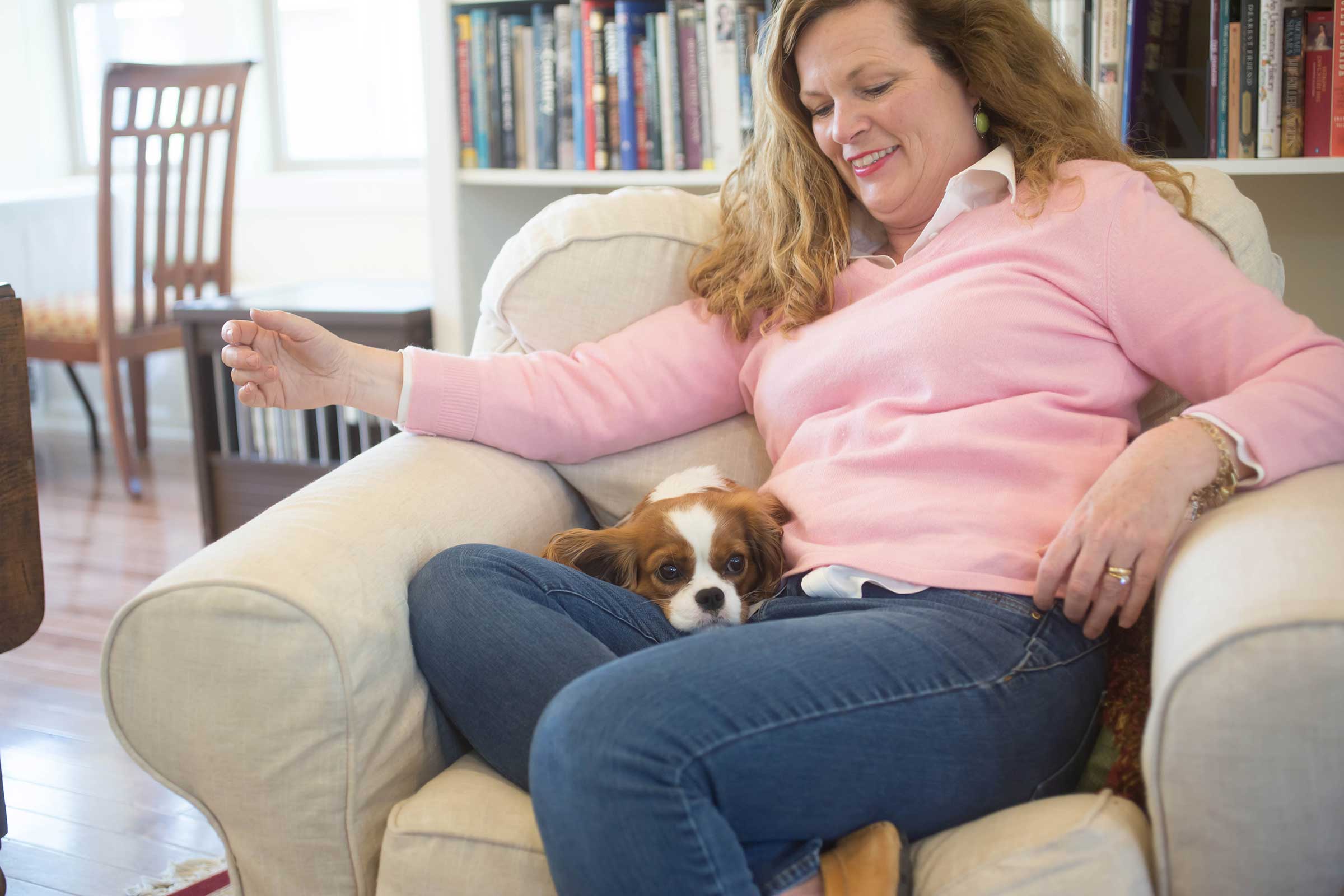This post may contain affiliate links. Full disclosure policy

Cochlear implants for single-sided deafness have been available in Europe for quite a few years, but they’ve only recently become an option for Americans. This summer, I was lucky enough to qualify for one.
Though results can vary from person to person, getting a cochlear implant has made a big difference in my life. But I might never have known I was eligible if my audiologist hadn’t told me about it.
So, I thought this would be a good time to share my story and how getting a cochlear implant for single-sided deafness has changed my world for the better.
But before I get into that, let’s go back to 2016 and the day I lost my hearing.
Sudden Sensorineural Hearing Loss – Losing My Hearing In The Blink Of An Eye
When people learn that I have almost no hearing in my left ear, the first thing they want to know is if I was born that way.
I wasn’t.
Until 2016, my hearing was basically perfect in both ears. But one day, as I was driving down the road, I suddenly had a strange feeling of fullness in my left ear, as if it were plugged up from a cold, and I couldn’t hear a thing in that ear.
At first, I didn’t think much about it, supposing I might be coming down with something. But over the course of the hours, days, and weeks that followed, I learned that I had Sudden Sensorineural Hearing Loss (SSHL for short).
Studies say that about four thousand people a year suffer from SSHL (after meeting so many people in similar circumstances, I’m convinced it’s more prevalent than that). Depending on the circumstances, SSHL can be a medical emergency.

That’s why I blogged about it back in 2018, because I wanted people to understand that suddenly losing your hearing is not normal. In fact, it can be a sign of life-threatening medical problems.
I also wanted people to know that getting immediate treatment can often restore all or part of the lost hearing. You can (and should!) read more about SSHL here.
Though I was treated promptly, my hearing loss was permanent.
I did what I could to adjust to that reality and got myself some CROS hearing aids. They helped a little, though not as much as I hoped. But I resigned myself to the situation, figuring it simply was what it was.
Cochlear Implants For Single-Sided Deafness – An Unexpected Ray Of Hope
In the wake of my hearing loss, I gave CROS hearing aids a try. They were better than nothing, but not a lot better.
For one thing, they offered me no directionality. All sound seemed to come from my right side. In restaurants or social situations with many voices, they were fairly useless. In crowded rooms with a lot of background noise, I just couldn’t understand what people were saying.
Because single-sided deafness is such a small subset of hearing loss, the CROS hearing aids never really had any technological advancements. It wasn’t financially worthwhile for companies to make them better, the way they do for standard hearing aids.
Even so, I went to see my audiologist last spring, hoping that there might have been some technological advances to help people like me.
There were! But not the kind I’d expected.
I already knew about cochlear implants for bilateral deafness. I even knew that some studies were being done on using cochlear implants for single-sided deafness because I had applied to be included in one. However, I was turned down because even though I only had 8% hearing in the impacted ear, my hearing was deemed “too good” for me to qualify as a candidate for the study.
This year, however, my audiologist told me that cochlear implants for single-sided deafness were no longer an experimental treatment. He also informed me that the hearing in my impacted ear had gotten worse and was now only 4%.
That, along with some other factors, meant I was eligible to undergo cochlear implant surgery.
It was exciting news, but also a lot to absorb.
Cochlear Implants For Single-Sided Deafness – Getting Info And Weighing Options
As you can imagine, I had so many questions! After that initial appointment, I had two more meetings – one with my audiologist and one with the surgeon – so I could get all the information I needed.
Something I learned right off is that cochlear implants aren’t an option for everyone with single-sided deafness. To be eligible, patients must have already tried hearing aids and found them ineffective. They must also have 5% or less hearing in the deaf ear and very good hearing in the other ear. Also, the hearing loss must have occurred within ten years. (Check with your audiologist about other requirements, or to see if the requirements have changed.)
Since my hearing loss had happened eight years before, I knew that when it came to cochlear implant surgery, it was now or never for me.
Still, I had one concern – the cost.
There’s no sugar-coating it. This is not an inexpensive procedure. When my doctor told me how much it would cost, I figured that was the end of that.
However, my doctor told me that they would work with my insurance company and handle all the necessary paperwork and communication to try and get approval. It took quite a few months, but that’s exactly what happened. I was surprised and thrilled!
As a self-employed writer, I’m also self-insured and have a pretty high deductible. But after discussing it together, my husband and I decided that giving me a chance to improve my hearing would be worth it.
Because no matter how much I tried to resign myself to it, losing my hearing had a negative impact on my life and my relationships.
As time went on, I found myself less inclined to accept invitations to social events and more inclined to draw into myself. Hearing loss has made it harder to enjoy and participate in conversations with family and friends.
And studies have shown that hearing loss is often connected to cognitive impairment.
Getting My Cochlear Implant
Getting a cochlear implant requires surgery.
As the name implies, a small device with receptors that go into the cochlea is implanted under the skin behind the impacted ear.
I’d never had a surgery of any kind before, so I was a little nervous. But since I was to go home on the same day, I figured it probably wasn’t that big a deal. The only thing I had to compare it to was getting a colonoscopy. Later, I realized that this was not a good comparison.
It was a real surgery, performed under full anesthesia. My procedure took a little less than two hours. However, I spent several hours in recovery and experienced some nausea. Even so, I was able to go home late that afternoon.
I felt pretty crummy that first day and the day after as well, but improved quickly from then on out.
Before long, I was back to my old self and excited to activate the device and start hearing again. However, I had to wait six weeks to give the incision time to heal and the swelling time to go down.
It felt like a long time!
Cochlear Implant Activation Day!

August 7th was activation day!
I showed up at my audiologist’s office with a backpack loaded with cochlear implant equipment and accessories, prepared for a long appointment.
In fact, it took two hours to undergo the training on how to use and care for the devices and understand the kinds rehabilitative listening I needed to undertake in the weeks and months to come.
But the big moment came at last!
My doctor tucked the battery pack and receiver over my ear, positioned a disc with a magnet inside over the spot with the implant to connect the device, and flipped the switch. Just like that, there was sound!
But honestly, it sounded pretty awful.
It was just noise at first, and really annoying noise at that – not quite fingernails on a chalkboard but close. Still, the doc had prepared me for that, so I wasn’t worried. After eight years of silence, hearing anything at all was kind of a thrill.
We adjusted the volume to a level I could tolerate comfortably, and the doctor sent me home with instructions to wear the device 12 hours a day and pair it with my phone so I could listen to things with only my deaf ear.
“Try listening to music you already know,” he said. “Or maybe a familiar audiobook. See if you can pick out a few words.”
Familiar audiobook? Why, yes! I could manage that.
Cochlear Implant for Single-Sided Deafness – Rehabilitation And Recovery

What a thrill it was to get home that day and listen to the audiobook version of a novel I wrote – The Restoration of Celia Fairchild – and I found that I could understand a word here and there, sometimes even two or three in a row!
That was a great motivation to keep listening. Within a week, I found I could understand about 90% of the words in that very familiar audiobook.
Of course, my percentages went down when listening to material I was less familiar with, but I was understanding more and more as the days passed.
It hasn’t always been easy. Taking my rehabilitation seriously by wearing the device twelve or more hours a day, actively participating in rehabilitative activities and exercises daily, and taking online classes offered by the company that made my device has really helped.
When I went back to see my audiologist a month after activation, we put me in the booth to test my hearing. I had a 66% comprehension. A HUGE improvement!
Cochlear Implant for Single-Sided Deafness – What It Does And Doesn’t Do For Me

My hearing and comprehension should continue to improve over the course of the next year.
However, as I told my doctor at my one-month-post-activation appointment, if my hearing never got any better than it was at that moment, it still would have been worth it to me.
Results can vary (and widely) from person to person – my experience is mine alone. But here is what getting a cochlear implant has done for me…
- It’s given me directionality. While that might seem like a small thing, being able to tell where a noise is coming from makes life a lot easier for me.
- It’s vastly improved my ability to understand what is being said on television, radio, and, most importantly, during conversations.
- It has made me feel more at ease in social settings and, therefore, more willing to participate socially.
- It has increased my confidence because I’m not worried that I’m responding inappropriately when someone asks me a question.
In spite of all this, listening through a cochlear implant is NOT the same as regular hearing! Here’s what a cochlear implant doesn’t or can’t do…
- It does not replicate the hearing that I had before I went deaf.
- The sound quality from my implant is decidedly tinny and a little staticky. Sometimes, it reminds me of listening to an old-school transistor radio in a rural area.
- Because of that tinny quality, it’s not great for listening to music. When I want to listen to music, I generally turn it off.
However, all in all, getting a cochlear implant has been life-changing for me.
I am incredibly so grateful for the opportunity my implant has afforded me to hear, understand, and participate in conversations with my friends and family again. Hopefully, as cochlear implants become more available to treat single-sided deafness, more and more people will be able to say that same thing.
If you or someone you know has single-sided deafness, I urge you to have a conversation with a doctor of audiology to see if cochlear implants might be a good option for you, too.


